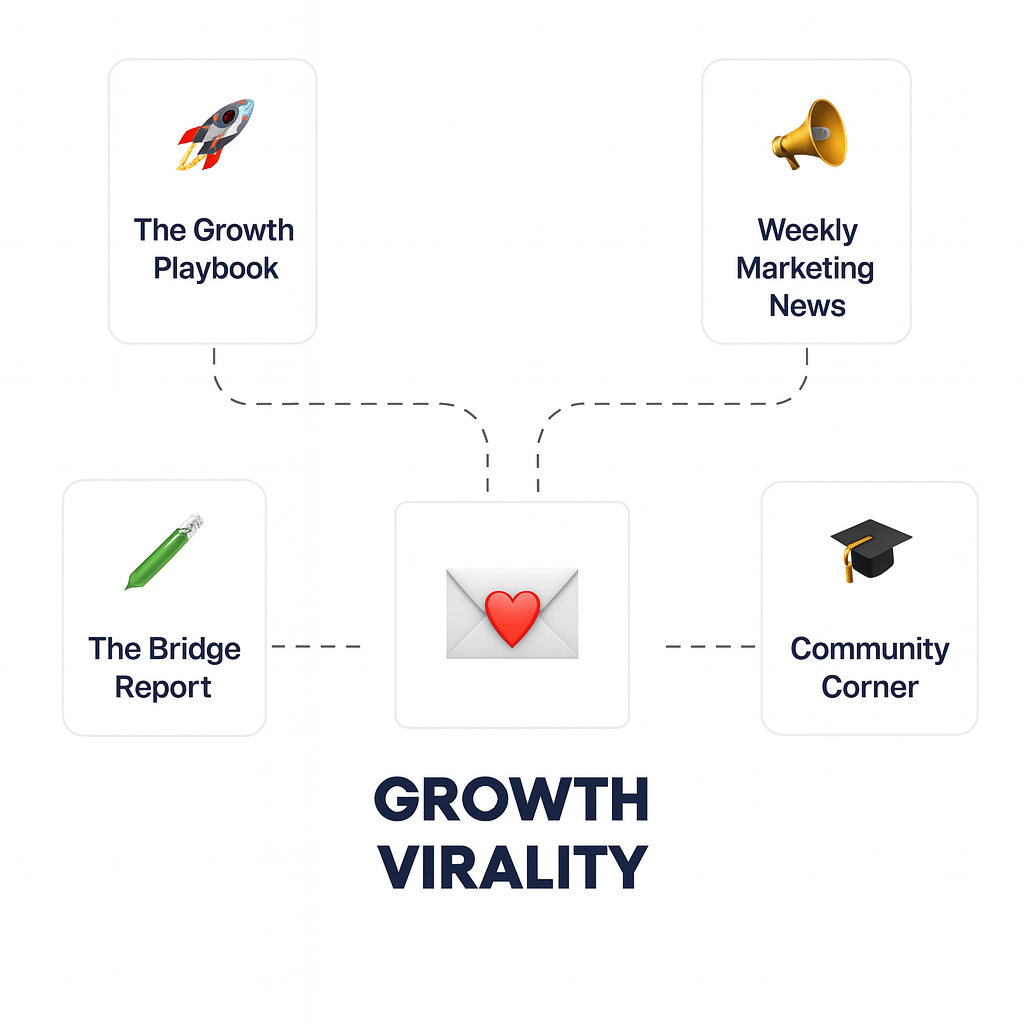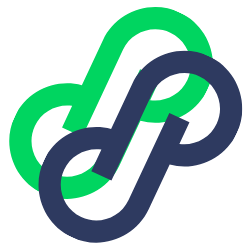Get growth-marketing insights. In your inbox.
We share weekly growth strategies, news, playbooks, and marketing trends in one 5-minute newsletter.
Join 14,364 founders & marketers in growth mode
No spam. Unsubscribe anytime.



What is inside our Growth Newsletter?
🚀 Weekly Growth Strategy
One proven strategy, campaign teardown, or creative framework you can use now — from UGC testing systems to CRO breakdowns.
🧠 Weekly Marketing News
2-minute summaries of the most important AI, marketing, and business news — what matters, and what to ignore.
🔍 The Bridge Report
Data-backed insights from the largest agency’s — what brands are hiring for, what services are trending, and what’s working.
💬 Community Corner
Get insights from our marketing community. Get hot takes, quick wins, and open Q&As from our Discord of 5,000+ marketers & founders.
📎 Tools & Templates
Every issue includes one fast win — a Notion tracker, prompt, doc, or swipe file you’ll actually use.

See examples of our weekly growth strategies
Virtual Influencers Are Now Taking Over.

Creative Testing Ads without Burning Out Your Team
The Problem:
Brands know they need to test more creatives — but most teams hit a wall after 5–10 variations. Performance drops, and iteration slows.
What Most Teams Get Wrong:
They treat every ad as a new build. Instead, top brands use modular creative systems — plug-and-play structures that let you scale testing without rebuilding from scratch.
The Strategy:
-
Create 3 Foundational Concepts per month (e.g. “product demo,” “testimonial,” “UGC story”).
-
Break each into modular parts: hook, offer, CTA, visual style.
-
Mix & match to create 15–25 fast iterations.
-
Run in Meta’s split test tool with CTR as the primary signal.
-
Kill underperformers (<0.7% CTR), double down on top creatives with offer variations.
Fixing Landing Pages That Leak Conversions
The Problem:
You’re spending on paid traffic — and the clicks are coming in — but the landing page just isn’t converting. You optimize the design. You A/B test buttons. You tweak colors. Nothing moves the needle.
The issue? It’s not the design. It’s the structure and focus of the page.
What Most Teams Get Wrong:
Most landing pages are built like websites: multiple CTAs, scattered sections, low clarity. That’s fine if your visitor is browsing. But if you’re running paid ads, you need pages that act like focused funnels — designed to deliver one message and one action.
The Strategy: Rebuild Your Landing Page Like a Funnel, Not a Homepage
Follow these 5 steps to rebuild your page for high-intent traffic:
1. Strip Navigation & Links
Remove all distractions (header nav, footer links, unrelated CTAs). Fewer exits = more conversions.
2. Make Your Headline a Promise
Don’t just describe your product. Make a clear, outcome-driven promise with specificity and time frame.
✅ Instead of: “GLP-1 Weight Loss Program”
👉 Use: “Lose 12 lbs in 30 Days — Doctor-Backed GLP-1 Coaching”
3. Proof Within 1 Scroll
Under the headline, stack social proof + visual + credibility:
Real photo or explainer gif
Testimonial (with face or star rating)
Trust signal (certified, used by 5,000+ customers, etc.)
4. CTAs Repeated Every Scroll
Place a primary CTA above the fold, then repeat it every ~1.5 scrolls.
CTA copy should be outcome-focused too:
👉 “Start Losing Weight Today” vs. “Book Now”
5. Use Time-Based or Scarcity Framing
If you’re running an offer, make it visual and urgent:
🕐 “20 spots left this month”
🎯 “Only open until Friday at 11:59 PM”
Drilling Down Ideal Target Audiences
⏳ The Old Way? It’s Over.
Marketers have been leaning too much on the same old audience targeting methods.
But with privacy laws getting stricter and data becoming harder to come by, it’s time to switch things up. You need a plan that’s future-proof, secure, and privacy-conscious.
Here’s how you can turn Confidential Matching into a real growth opportunity:
1 – Build a First-Party Data Strategy
Every campaign starts with your own data. Start collecting first-party data from lead-gen efforts—whether that’s through email sign-ups, website traffic, or customer engagement.
This data is your goldmine for creating hyper-targeted audiences with Confidential Matching, and you won’t need to rely on third-party data sources anymore.
2 – Micro-Segment Your Audiences
Don’t just dump all your data into Google Ads in one big list. Break it down into micro-segments based on behaviors, preferences, and how customers interact with your brand.
The more precise your audience, the better your messaging will land, and the more likely you’ll reach exactly who you want.
3 – Create Custom Campaign Architectures
Confidential Matching lets you build bespoke audiences from your CRM data, and the best part? These audiences can’t be reverse-engineered or tracked by others.
Use this advantage to create campaigns that speak directly to customer pain points and needs without fear of your strategy being stolen.
4 – Keep an Eye on Performance
Some worry that privacy tools like this might hurt ad performance, but if you stay on top of your key metrics—conversion rates, cost-per-acquisition (CPA), etc.—you’ll do great.
Start by testing with smaller audience groups, then tweak your targeting and creatives to optimize results.
